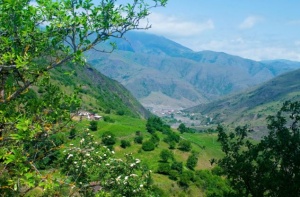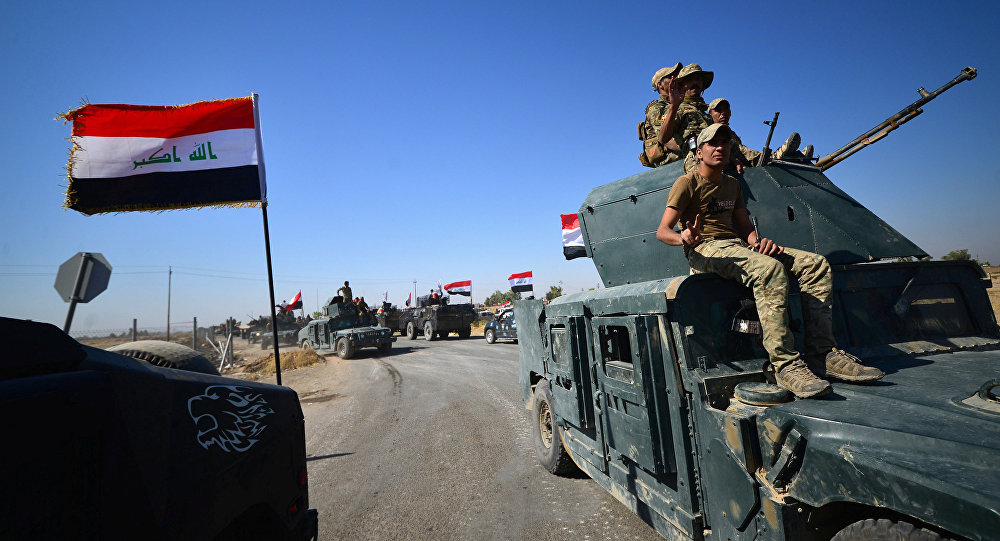The Russian-led offensive in the Idlib province has already displaced at least 800, 000 people in three months. Many of them have been displaced multiple times during the Syrian Civil War and are now fleeing towards Turkey, seeking refuge in camps on the closed border. In addition to the grave humanitarian crisis it prompted, the campaign gives terrorist organizations an opportunity to exploit the current situation.
There are fears that Daesh could take advantage of the chaos to regain some of its strength, which is something that occurred in northeast Syria after the Turkish offensive last October. Although the Idlib province does not face the challenge of keeping thousands of Daesh members in prisons and camps, there are fighters, who relocated to the region from other areas of Syria, as well as Daesh linked groups. Despite little concern that the group would be able to seize territory compared to what it once held, it was still able to mobilize thousands of members and it is in possession of a considerable sum of money, making it a potent security risk. In addition, there are other groups present in the region, such as Hayat Tahrir al-Sham, which could exploit the crisis in different ways.
Terrorist groups could take advantage of the new refugee wave and head for Turkey. Idlib is home to around 3 million people and Turkey, which already hosts the largest refugee population in the world, is afraid of the new refugee influx. President Erdogan stated that Turkey will not carry such burden on its own and that all European countries will feel the negative impact of this pressure.
Besides the possibility of thousands of refugees pouring in both Turkey and Europe, there is a risk of terrorists and foreign fighters joining the wave and travelling back home or elsewhere. Syria has been known for attracting a huge number of foreign fighters who pose a security risk to their home countries. Although Turkey sealed its border, diplomats say that the country will not be able to prevent all the people from crossing to its territory. Moreover, as the offensive is continuing and the territory under rebel control is shrinking, there is a question of what will happen if advance of the operation is not halted. But, even if terrorists were not able to enter Turkey, they could benefit from their presence in refugee camps.
Refugee camps on the Turkish borders might become a hotbed of radicalization and a pool for recruitment. The majority of people fleeing to refugee camps are women and children. With a lack of security, terrorists are met with ideal conditions to spread their ideology to children, often lacking proper education, and arguably more susceptible than adults. However, as many people fled the fighting multiple times, their grievances could be exploited more easily than before, pushing them closer to the decision to join an armed group. Furthermore, refugees are living in dire conditions and poverty therefore becoming a member of an organization might be the only way to provide for their family. All in all, terrorists might take advantage of people’s situation in refugee camps in a number of ways.
As there are thousands of fighters, it is highly unlikely that the Syrian army will be able to eliminate or capture all of them. Thus, some of the terrorists might decide to hide in the camps with the aim of surviving the government’s operation and launching terrorist attacks in the future.
Currently, the only possible solution to the crisis seems to be a stop to the government offensive and a resort to diplomacy. At the same time, this scenario seems unlikely. Turkey stated that the situation will not be solved until Syrian forces withdraw. Soon after, the Syrian army consolidated control of Aleppo and pledged to eradicate all militant groups. A Turkish delegation visited Moscow on February 17 to engage in ongoing talks; however, efforts to broker a lasting ceasefire have failed in past weeks. Therefore, prospects for stoppage of the offensive and a relief to the crisis look rather dim.







